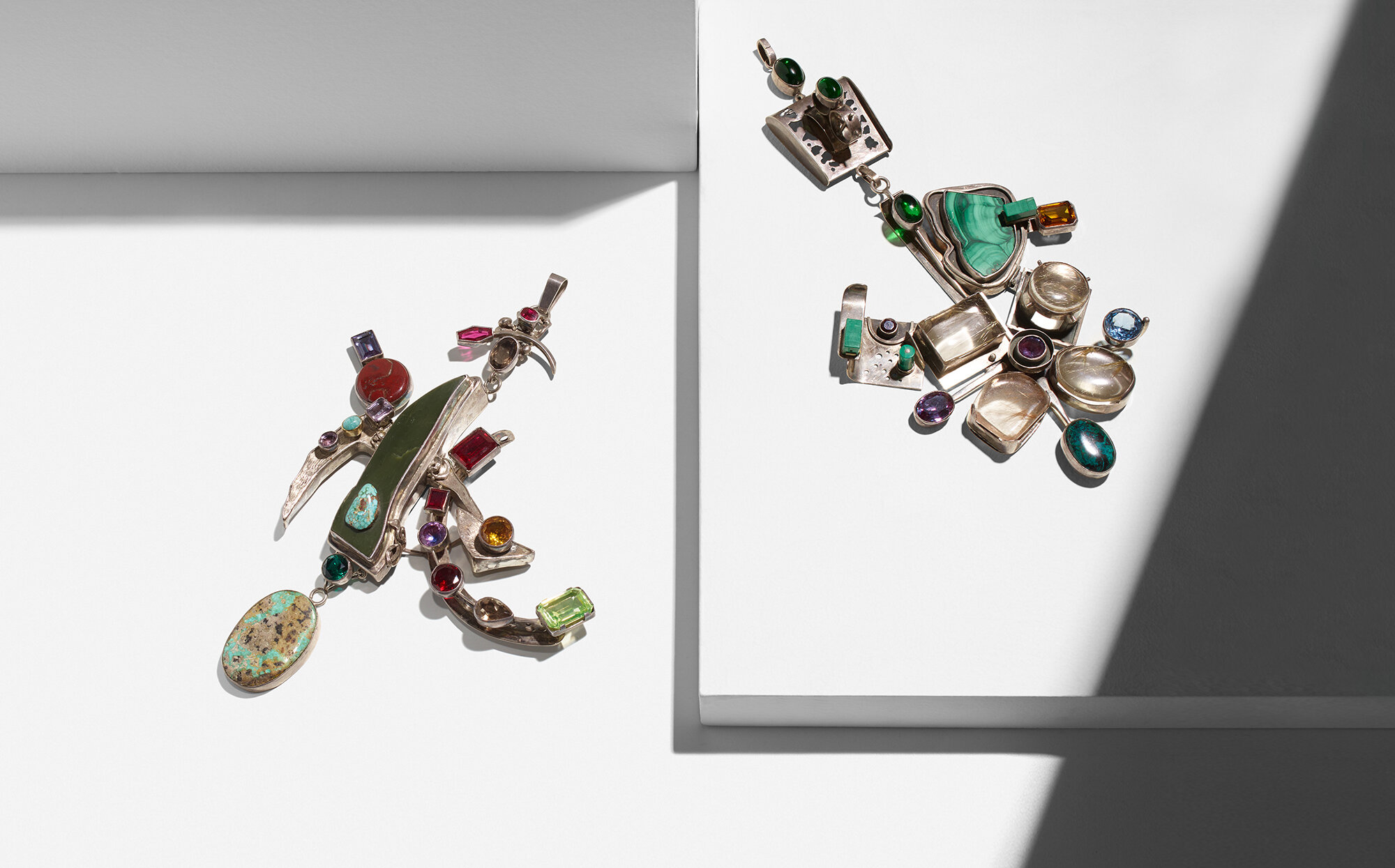214
214
Hermann Jünger 1928–2005 follow artist
follow artist
necklace from Schmuckkasten Series
necklace from Schmuckkasten Series
Niessing
1990
18 karat gold, gold-plated silver, jasper, hematite, quartz, carnelian 5¾ h × 5¾ w × ⅝ d in (15 × 15 × 2 cm)
1990
18 karat gold, gold-plated silver, jasper, hematite, quartz, carnelian 5¾ h × 5¾ w × ⅝ d in (15 × 15 × 2 cm)
estimate: $8,000–10,000
result: $12,500
follow artist
Set includes cord with twelve components. Necklace length: 21 inches. Components range in size from 1.5 to 0.25 inches. Stamped artist's cipher and date to interior of box ‘90’. Manufacturer's mark to clasp 'Niessing 750'.
provenance: Rotasa Collection
literature: Jewelry of Our Time: Art, Ornament and Obsession, Drutt and Dormer, pg. 127 illustrates related example
A similar work is held in the collection of the Victoria & Albert Museum, London.

























